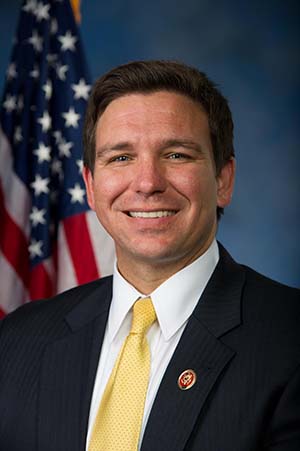Here A Justice, There A Justice, Everywhere A Conservative New Judge
 By Connie Ross
By Connie Ross
The ideology of the Florida State Supreme Court has recently been dramatically reshaped for the next generation. As promised, Governor Ron DeSantis replaced three state Supreme Court Justices who retired by mandate on January 8th with conservative judges who respect the rule of law and believe the Constitution is supreme, thus putting an end to “judicial activism” on the court. Justice Barbara Lagoa, Justice Robert J. Luck and Justice Carlos G. Muñiz were selected from a list of finalists among 59 applicants submitted by the Florida Supreme Court Judicial Nominating Commission. Nine of the eleven final nominees were members the Federalist Society, a conservative legal group who believe, “it is emphatically the province and duty of the judiciary to say what the law is, not what it should be.” Luck is not a Federalist Society member, but did indicate he was a moderator for a February 2018 Federalist Society conference in Florida.
The Florida Supreme Court is composed of seven Justices. At least five Justices are required to participate in every case, and no less than four must concur to reach a decision. Historically judges were chosen by direct election of the people, which created ethical issues when candidates needed to raise campaign money that was often donated by the same attorneys who practiced before the Court. After several Florida appellate judges were charged with violations of ethics, an evolved “merit retention” system was instituted in the mid-70s to seat Florida Justices. Today when there is a vacancy on the Court, the Governor chooses the next Justice from a list of three to six individuals recommended by a Judicial Nominating Commission. When Justices’ terms expire, their name is placed on the general election ballot for a merit retention vote if they wish to remain in office. The ballot question asks: “Shall Justice _____ be retained in office?” The three newly appointed Justices face a merit retention vote in 2020.
Based on the Constitutional separation of powers and the proper role of the courts, judges do not make policy, they simply interpret the law. Laws, however, do not spell out how they should be applied in every conceivable case, which has resulted in Federal Judges who appear to act like Democratic politicians and create legislation from the bench. President Trump has been working diligently to resolve this crisis in the federal courts.

As of January 23, 2019, the United States Senate confirmed 85 Article III judges nominated by President Trump, including Associate Justices Neil Gorsuch and Brett Kavanaugh to the Supreme Court of the United States, 30 judges to the United States Court of Appeals and 53 judges to United States District Courts. There are currently 54 nominations to Article III courts awaiting Senate action, including 9 for the Courts of Appeals, 43 for the District Courts, and 2 for the Court of International Trade. Additionally, the Senate confirmed 7 Judges in Article I courts; there are currently 3 nominations to Article I courts awaiting Senate action.
Like other judges, the United States Supreme Court Justices preside over civil and criminal court cases with the goal of upholding, enforcing, and interpreting the law, however they uniquely interpret and defend the grandest law in the land: the U.S. Constitution. The Constitution gives it the power to check, if necessary, the actions of the President and Congress. The Supreme Court functions as a last resort tribunal and its rulings cannot be appealed except by a subsequent decision of the Supreme Court of the United States. With the magnitude of the duties of the Supreme Court I find myself wondering… where is Justice Ruth Bader Ginsburg?


